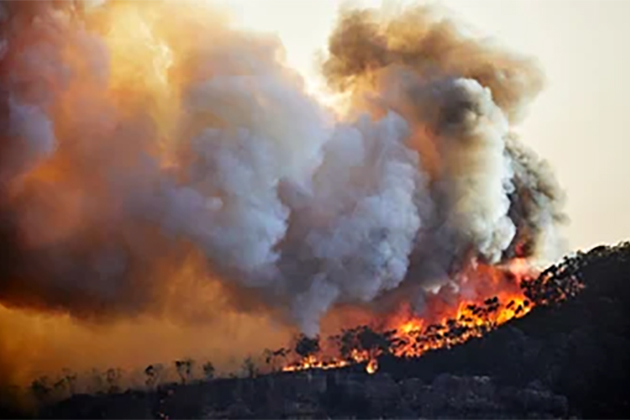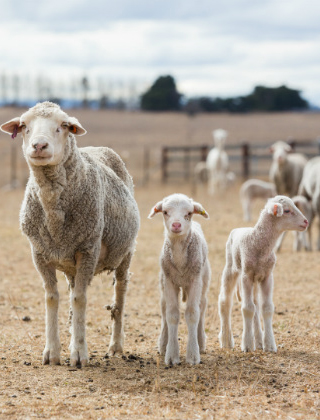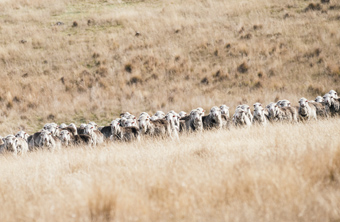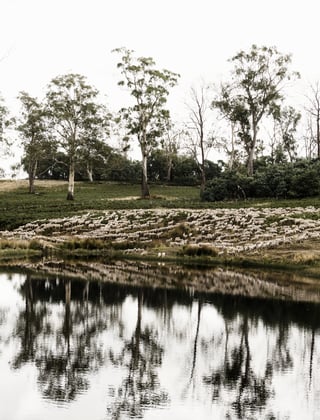Bushfires - Livestock Safety and Recovery

Here is information about bushfire preparation and recovery for livestock.
Information about bushfire preparation and recovery for livestock.
Emergency Livestock Safety During Bushfires
- Hold livestock in large irrigated, heavily grazed or ploughed paddocks
- Hold livestock in large, clear stockyards, laneways or holding yards
- Move livestock to paddocks with large dams and earth mounded on the fire facing sides
- Secure gates open for connected paddocks
- Ensure access to ample water
- Clear fire breaks around livestock holding areas
- Ensure your Property Identification Code (PIC) is up to date
(Above information sourced from NSW DPI, Country Fire Authority, PIRSA and adapted by AWI)
State Based Bushfire Assistance
New South Wales
Livestock Assistance
- State recovery assistance services
- Fodder depots and water for stock or call the Agricultural and Animal Services Hotline on 1800 814 647
- Stock loss and assessment or call the Agricultural and Animal Services Hotline on 1800 814 647
- Animal facilities for relocated livestock
Mental Health Support
- NSW Mental Health Line call 1800 011 511
- Rural Adversity Mental Health Program (RAMHP)
Queensland
Livestock Assistance
- State recovery assistance services
- Disaster recovery support
- Fodder requests and donations or call 1800 623 946
Mental Health Support
South Australia
Livestock Assistance
- State recovery assistance services
- Fodder requests and donations: call Livestock SA on 0419 035 459
- Stock loss and assessment or call PIRSA on 1800 255 556
Mental Health Support
Tasmania
Livestock Assistance
- State recovery assistance services
- Livestock animal welfare during bushfires or call DPIPWE on 03 6165 3777
- Where to purchase fodder
Mental Health Support
Victoria
Livestock Assistance
- State recovery assistance services
- Fodder requests, donations and agistment or call Victorian Farmers Federation 1300 882 833
- Stock loss and assessment: call Agriculture Victoria on 1800 226 226
Mental Health Support
Financial Assistance Services
Western Australia
Livestock Assistance
- State recovery assistance services or DPIRD on (08)9368333
- Stock loss and assessment or email animal.welfare@dpird.wa.gov.au
Mental Health Support
- Rural health, financial and information services support directory
- Crisis Care counselling service or call 1800 199 008
- Mental Health Emergency Response Line or call 1300 555 788
-
Rural West for Financial & Management Support or call 1800 612 004

The Yarn: Bushfires: Emergency Livestock Safety and Recovery
Catastrophic fire conditions across the nation have put emergency livestock management into sharp focus. Qualified veterinarian and AWI General Manager of Research, Dr Jane Littlejohn, offers immediate advice to those who have been affected.
Recovering from drought and bushfire
If you have been lucky enough to get rain recently or have been affected by bushfires, then you may be considering purchasing sheep. However, you need to make sure you're not purchasing a whole heap of unwanted problems too. This document provides some key issues to consider, plus links to AWI and external resources
Soil Health and Pasture Recovery After a Fire
Significant bushfire events can leave paddocks bare at the time of year when they’re most susceptible to erosion. There are several management options available to landholders to consider in the immediate aftermath of bushfires to mitigate the risk of soil erosion in bare paddocks and reduce the time taken to regenerate the paddock to productive feed.
Managing Sheep in Containment Areas After Fire
Containment feeding refers to “maintenance” feeding sheep in contained areas and it can be a valuable tool to managing sheep after a fire.
Stock Water: Limited Resource After Fire
After a fire, knowing the quantity, quality and reliability of stock water is essential.
Livestock Safety During Bushfires
Guidance prepared by PIRSA about how to ensure the safety of your livestock during bushfires. Whilst caring for livestock and other animals before and after a bushfire is essential, personal safety should be considered as a first priority on all occasions.
Be sure to get your Bushfire Survival Plan up to date and to hand.
Other Resources















